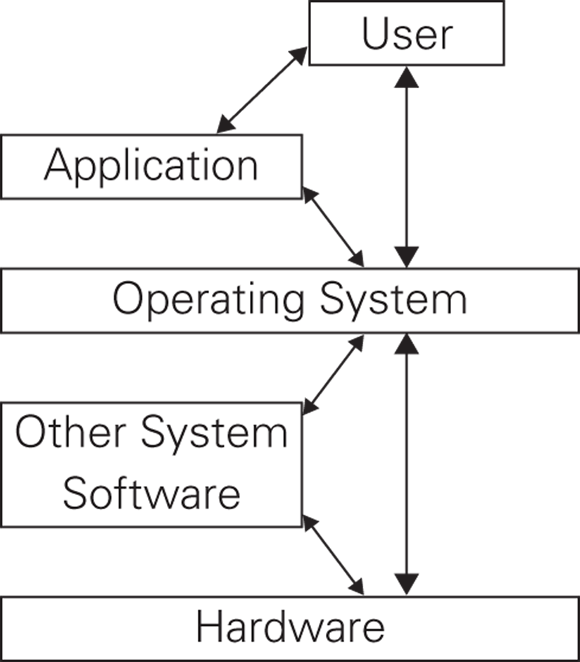Chapter 8
Operating Systems
BEFORE EXPLORING THE world of operating systems, we should be clear about what they are. Here’s a basic definition from the online version of the Merriam-Webster dictionary, of all places, that hits it better than many computer books: it says an operating system is “the main program in a computer that controls the way the computer works and makes it possible for other programs to function”.
We can expand on this definition by saying that the operating system (OS) consists of software that controls the use of computer hardware and software resources, enables user interaction via applications (programs), or gives direct access to various functions outside of applications, such as copying or deleting files, updating the OS itself, and so forth. We understand the OS hides way out of sight but it makes everything the computer does possible. Figure 8-1 shows a basic computer system.

FIGURE 8-1: A basic computer system
This chapter first looks at operating systems in general, including their fascinating history. We explore concepts like time-sharing, in which the OS controls slices of processor time, memory usage, mass storage reads and writes, and all the system’s other facilities and resources to enable multitasking (running more than one application at essentially the same time). Time-sharing also allows multiuser modes in which several users—or even millions ...
Get Learning Computer Architecture with Raspberry Pi now with the O’Reilly learning platform.
O’Reilly members experience books, live events, courses curated by job role, and more from O’Reilly and nearly 200 top publishers.

